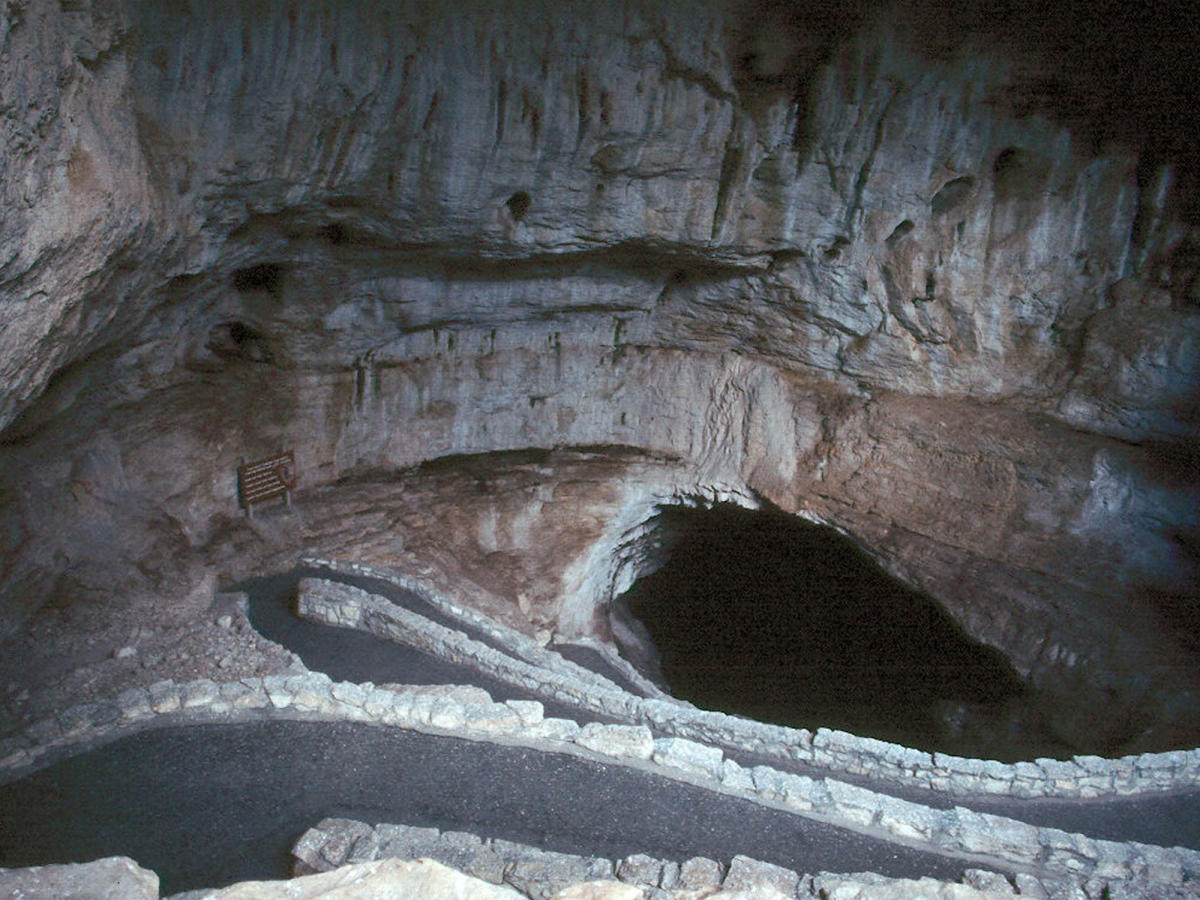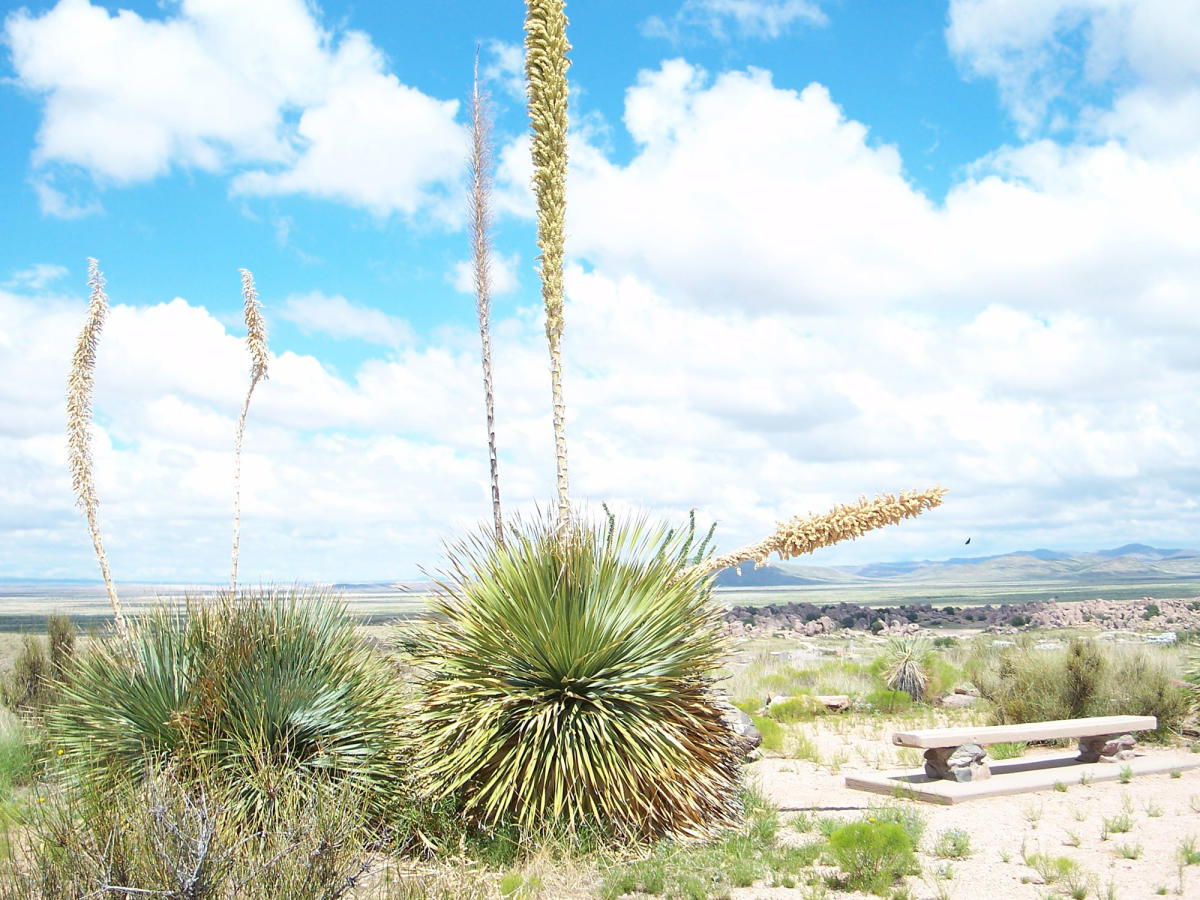
Descending into the Caverns
Before arriving to Carlsbad Caverns National Park, you may have a few questions — namely, how you’ll descend into the caverns. But rest assured, it’s quite simple! Visitors can either take an elevator down to the Big Room or embark upon the Natural Entrance Trail, a 1.25-mile (2 km) descent. The descent using the Natural Entrance Trail is steep, equivalent to about 79 stories, and will take about 40 minutes to an hour to hike. Either way you choose to descend into Carlsbad Caverns, you’ll be greeted by the magnificence of the Big Room, a cavern so large actor and comedian Will Rogers called it “the Grand Canyon with a roof over it.”

Surface Landscapes of Carlsbad Caverns National Park
Located in the northern portion of the Chihuahuan Desert and backdropped by the Guadalupe Mountains, the natural features of the park’s surface landscapes are not to be missed! Carlsbad Caverns National Park contains one of the few protected portions of the northern Chihuahuan Desert ecosystem, the most biologically diverse desert in the Western Hemisphere and one of the most diverse in the world. From short treks to overnight backpacking adventures, embarking on one of the Park’s surface hiking trails is a great and rewarding way to explore the area’s incredible landscapes. Just make sure you’re prepared with enough supplies before heading out!

See the Bats in Flight
Just like Jim White witnessed in the early 1880’s, hundreds of thousands of bats still swarm in and out of the cave’s entrance daily, hunting for food in the surrounding area. From Memorial Day weekend through October, it’s a tradition to watch their mass exodus from the cavern each evening during the Park’s Bat Flight Program. Early birds can head to the Carlsbad Caverns early to watch the bats return at dawn. Settle in at the Bat Flight Amphitheater, located at the Natural Entrance to Carlsbad Caverns, and get ready for an unforgettable sight!

History of Carlsbad Caverns
An estimated 250 to 280 million years ago, the desert landscape we see today was covered by a shallow sea ringed by a vast, horseshoe-shaped limestone reef. After the sea evaporated, the constant dripping of acidic groundwater dissolved the limestone and carved out massive underground chambers and formed enormous stalactites, stalagmites, and other geological formations, creating the marvel we know today as Carlsbad Caverns.
In 1882, alerted by a “plume” of bats rising from the desert, 16-year-old Jim White found the entrance of Carlsbad Caverns. “I found myself gazing into the biggest and blackest hole I had ever seen,” he described the moment. While Jim White is widely credited as the first “explorer” of the caves and spent much of his life advocating and educating the public about the caverns, he is far from the first to discover and explore the depths of Carlsbad Caverns. The land’s original inhabitants, namely the Mescalero Apache, knew about the cave long before its location was rediscovered in the 1880s. In fact, archeological artifacts from these early inhabitants are still visible at the cave’s entrance to eagle-eyed visitors.
Other Things to See in the Area

Sitting Bull Falls
An hour outside of Carlsbad, Sitting Bull Falls is a scenic desert oasis where visitors can spend the day enjoying a picnic in the cabanas and a dip in the natural pools.

Living Desert Zoo and Gardens State Park
This native-wildlife zoo exhibits more than 40 species of animals and hundreds of species of plants native to the Chihuahuan Desert. The park offers an up-close experience for its visitors with a variety of fun interpretive programs for every season geared for the entire family.

Brantley Lake State Park
Brantley Lake, just twelve miles north of Carlsbad, is the southernmost lake in New Mexico and an oasis of wildlife, plant life, gorgeous sunsets, and stunning night skies. The park offers adventurous visitors boating, kayaking, canoeing, fishing, hiking, and bird watching opportunities.

